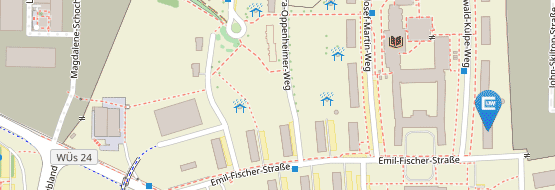Jigsaw
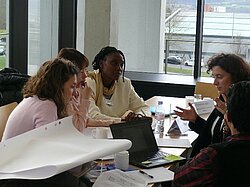
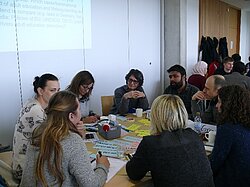
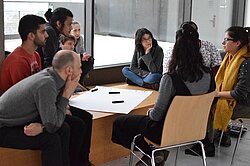
Aim of the method/strategy
- To identify the trainer’s profile in the group
- To figure out the trainer’s role in the context
- To practice positive interdependence to achieve common goals
- To investigate the efficacy of a cooperative method
Setting
- Classroom, mobile chairs, tables
Type and name of the course, curriculum, number of students
- Training methods, bachelor’s degree in education, 20 students
Description of method/strategy
- Prerequisites: Students need to have attended some lessons of the course and must have general information on the topic (in this case: the trainer’s role)
- Pre-phase: The teacher/instructor gives a general presentation of the method’s four steps to students/learners. Presentation of the topic the groups will be asked to work on (in this case, the trainer’s profile) (previous chapters of the textbook)
- First phase: Forming the ‘house group’ (4 members in each group)
- Each group member chooses a letter: A-B-C-D (4 minutes);
- All the material is divided into segments or to-do activities. One segment is given to each group member. The leader of the group is in charge of presenting the results in a plenary session.
Task and time for this specific activity (3 minutes of individual work in the house group):
- Member A: identifies the trainer’s key competences and knowledge
- Member B: the trainer in the design phase: what should she/he know? (context, needs, contents, etc.)
- Member C: the trainer in action (a): preparation of the context (choice of setting, tools, hospitality, climate, timing, etc.)
- Member D: the trainer in action (b): the method (group activity, discussion, use of techniques, reflection, etc.)
- Second phase (15 minutes): Forming the ‘expert group’ (roles are assigned, and each role’s activity is explained)
- Roles:
- COORDINATOR: is in charge of group management procedures.
- ANALYST: draws up the map of contents that emerge in the expert group.
- TIMER: checks the time available to the group for the assigned phase and delivery.
- REPORTER: prepares the ‘typical’ report to the home group.
Task for the expert group: All members with the same letters have to carry out the task corresponding to the previous assignment:
- Expert A: identifies the trainer’s key competences and knowledge
- Expert B: the trainer in the design phase: what should she/he know? (context, needs, contents, etc.)
- Expert C: the trainer in action (a): preparation of the context (choice of setting, tools, hospitality, climate, timing, etc.)
- Expert D: the trainer in action (b): the method (group activity, discussion, use of techniques, reflection, etc.)
- Third Phase: Return to the ‘house group’, where the experts feed back the results to the group. The house group builds the information puzzles (8-10 minutes). They can use markers, flip chart, and posters to present their output to the class.
- Fourth Phase: The coordinator of the group presents the results of the house group.
Note: Using the presentation of each group, students can perform a self-assessment regarding their attention, responsibility, and commitment by gathering proper information from the expert group. In fact, the results of each group should be the same; the difference will show the level of the mentioned aspects.
Materials required
Chairs, tables, papers, markers, flip chart
Origin and theoretical framework
Origin: The jigsaw classroom is a research-based cooperative learning technique invented and developed in the early 1970s by Elliot Aronson and his students at the University of Texas and the University of California. Since 1971, thousands of classrooms have used jigsaw with great success. His graduate students and he had invented the jigsaw strategy that year, as a matter of absolute necessity to help defuse an explosive situation. The city's schools had recently been desegregated, and because Austin had always been racially segregated, white youngsters, African-American youngsters, and Hispanic youngsters found themselves in the same classrooms for the first time.
Within a few weeks, long-standing suspicion, fear, and distrust between groups produced an atmosphere of turmoil and hostility. Fistfights erupted in corridors and schoolyards across the city. The school superintendent called Prof Austin in to see if they could do anything to help students get along with one another. After observing what was going on in classrooms for a few days, students and Prof Aronson concluded that intergroup hostility was being fueled by the competitive environment of the classroom. For this reason, Aronson and his colleagues approached the situation as a learning problem not as a crisis-management problem - and they began their research in the elementary schools rather than in the high schools.
Theoretical framework: Jigsaw is a strategy of cooperative learning studied in different ways by teachers and researchers (Aronson, Blaney, Stephin, Sikes, & Snapp, 1978; Aronson & Patnoe, 1997; Clarke,1994; Hedeen, 2003; Holliday, 2002; Mengduo & Xiaoling, 2010), requiring everyone’s cooperative effort to produce the final product.
Risks and advantages
Advantages:
- it helps students learn the content of the subject through peer teaching and cooperation;
- it has a strong effect on learning attitudes and social and group relationships, because each student has a chance to contribute meaningfully to a discussion;
- each student develops expertise and has something important information to contribute;
- cooperation and communication are necessary, and students are active participants in the learning process and in the achievement of a common goal.
Risks:
- it requires time for preparation and realization (the use of time depends on the assignment for students).
Possible variations
Variations may include
- the familiarity of all group members with the whole task;
- student ‘expert sheets’, providing notes for introducing the material back to the home group and for giving individual assessments;
- changing the number of members in the same house/expert group: for instance, if the task is very difficult, two or three members may have the same letter and represent the same expert (subgroup of the experts).
Other examples where you think it could be used
- Formal/informal setting
Recommendations
- It must be well planned in terms of time management/material/ setting/content.
Graphic representation of the use of the strategy
First phase ‘house group’
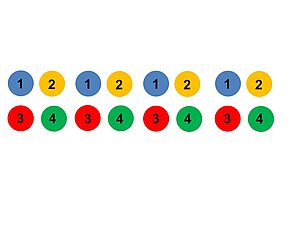
Second phase ‘group of experts’
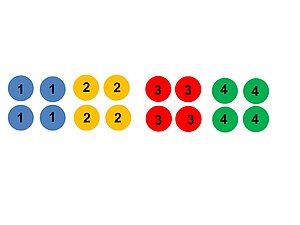
Third phase ‘house group’

References
Aronson, E., Blaney, N., Stephin, C., Sikes, J., & Snapp, M. (1978). The jigsaw classroom. Beverly Hills CA: Sage.
Aronson, E., & Patnoe, S. (1997). The jigsaw classroom: Building cooperation in the classroom. New York: Longman.
Clarke, J. (1994). Pieces of the puzzle: The jigsaw method. In S. Sharan (Ed.), Handbook of cooperative learning methods. Westport CT: Greenwood Press.
Hedeen, T. (2003). The reverse jigsaw: A process of cooperative learning and discussion. TeachingSsociology, 31(3), 325-332.
Holliday, D. C. (2002). Jigsaw IV: Using student/teacher concerns to improve jigsaw III. ERIC ED 465687. Indiana University, Northwest.
Mengduo, Q., & Xiaoling, J. (2010). Jigsaw strategy as a cooperative learning technique: Focusing on the language learners. Chinese Journal of Applied Linguistics (Foreign Language Teaching & Research Press), 33(4).
Contact Person
Tina Concetta (concetta.tino@unipd.it )


